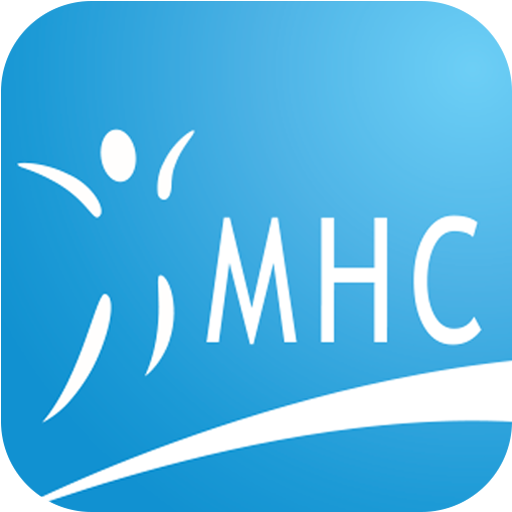Liver Diseases
Home / Service Detail
Hepatitis A is a highly contagious liver infection caused by the hepatitis A virus (HAV). It spreads primarily through the fecal-oral route, often via contaminated food or water or close contact with an infected person.
Symptoms can include fatigue, nausea, abdominal pain, jaundice (yellowing of the skin and eyes), dark urine, and pale stools. While most cases resolve without lasting liver damage, severe cases can lead to acute liver failure.
Preventive measures include vaccination. If you’re traveling to areas with poor sanitation, vaccination is highly recommended.
Hepatitis B is a serious liver infection caused by the hepatitis B virus (HBV). It can be acute (short-term) or chronic (long-term). Chronic Hepatitis B can lead to severe complications like liver failure, cirrhosis, or liver cancer.
Key Facts:
- Transmission: HBV spreads through contact with infected blood, semen, or other body fluids. Common ways include unprotected sex, sharing needles, or from an infected mother to her baby during childbirth.
- Symptoms: Many people show no symptoms, but others may experience jaundice (yellowing of the skin and eyes), dark urine, fatigue, abdominal pain, nausea, and loss of appetite.
- Prevention: Vaccination is the most effective way to prevent Hepatitis B. Practicing safe sex, avoiding sharing needles, and ensuring proper sterilization of medical equipment are also crucial.
- Treatment: While acute Hepatitis B often resolves on its own, chronic cases may require antiviral medications to manage the infection and prevent liver damage.
Hepatitis C is a viral infection caused by the hepatitis C virus (HCV), which primarily affects the liver. It can lead to both acute and chronic liver diseases, with chronic Hepatitis C potentially causing severe complications like cirrhosis or liver cancer.
Key Facts
- Transmission: HCV spreads through contact with infected blood, often via shared needles, unscreened blood transfusions, or from mother to child during childbirth. Sexual transmission is less common.
- Symptoms: Acute Hepatitis C often has mild or no symptoms, but chronic cases may include fatigue, jaundice, dark urine, abdominal pain, and swelling.
- Diagnosis: Blood tests are used to detect HCV antibodies or viral RNA. Additional tests like liver biopsies or imaging may assess liver damage.
- Treatment: Antiviral medications can cure most cases of chronic Hepatitis C.
- Prevention: There is no vaccine for Hepatitis C, but preventive measures include avoiding shared needles, ensuring safe medical practices, and practicing safe sex.
Metabolic Dysfunction-Associated Steatotic Liver Disease (MASLD) & Metabolic-Associated Steatohepatitis (MASH)
- MASLD (formerly NAFLD) is one of the most common liver conditions, increasing due to obesity and metabolic syndrome.
- MASH (formerly NASH) represents the progressive form, which can lead to cirrhosis.
Types of Fatty Liver Disease
- Alcohol-Associated Liver Disease (ALD) – Linked to heavy alcohol intake.
- Metabolic Dysfunction-Associated Steatotic Liver Disease (MASLD) – Occurs without alcohol consumption, associated with metabolic syndrome (high cholesterol, high blood pressure, obesity).
- Metabolic-Associated Steatohepatitis (MASH) – The inflammatory and fibrotic progression of MASLD.
Key Facts
- Reversible with lifestyle changes.
- Non-invasive assessment using FibroScan or MRI.
- Fat accumulation >5-10% of liver weight is considered abnormal.
- Risk factors: Obesity, diabetes, high triglycerides, certain medications, and metabolic dysfunction.
Diagnosis
- Often incidental during routine ultrasound screening.
- If liver function tests (LFTs) are normal, MASLD is usually benign.
- If LFTs are abnormal, further specialist assessment is needed.
- Diagnosis is made by excluding other liver diseases (e.g., viral hepatitis).
Treatment
- Address underlying risk factors:
- Weight management
- Better diabetes control
- Reducing alcohol intake (if excessive)
Role of GLP-1 Receptor Agonists
- GLP-1 receptor agonists (GLP-1 RAs), originally developed for type 2 diabetes, show promise in MASLD and MASH management.
- They help by:
- Reducing hepatic lipogenesis (fat accumulation in the liver).
- Improving insulin sensitivity, lowering metabolic dysfunction.
- Modulating inflammation, potentially slowing fibrosis progression.
Key Findings
- Semaglutide (Wegovy, Ozempic): Investigated in Phase III trials for MASH, showing potential for weight loss and liver health improvement.
- Tirzepatide (Zepbound): A GLP-1/GIP dual agonist, demonstrating strong antifibrotic effects in early trials.
- Cardiovascular Benefits: GLP-1 RAs also reduce portal hypertension and heart failure risks in MASLD patients.
Clinical Implications
- Weight loss effects are particularly relevant for MASLD, given its strong link to obesity.
- Anti-inflammatory and antifibrotic properties may help slow disease progression.
- Further research needed to determine long-term efficacy in advanced fibrosis (F2-F3 MASH).
Liver cancer occurs when abnormal cells grow uncontrollably in the liver. It can be classified into primary liver cancer, which starts in the liver (e.g., hepatocellular carcinoma), and secondary liver cancer, which spreads to the liver from other parts of the body.
Symptoms
- Unexplained weight loss
- Loss of appetite
- Abdominal pain or swelling
- Jaundice (yellowing of the skin and eyes)
- Fatigue and weakness
- Dark urine or pale stools
Causes and Risk Factors
- Chronic infections with Hepatitis B or C
- Excessive alcohol consumption
- Metabolic Dysfunction-Associated Steatotic Liver Disease (MASLD)
- Cirrhosis (scarring of the liver)
- Exposure to aflatoxins (toxins from mouldy food)
Prevention
- Get vaccinated against Hepatitis B
- Avoid excessive alcohol consumption
- Maintain a healthy weight
Treatment Options
- Surgery: Removal of the tumor or liver transplant
- Ablation therapies: Using heat or cold to destroy cancer cells
- Radiation therapy: High-energy rays to target cancer
- Chemotherapy: Drugs to kill cancer cells
- Immunotherapy: Medications that enhances the immune response to the cancer cells
Alcoholic liver disease (ALD) is caused by excessive alcohol consumption, which damages the liver over time. It progresses through three main stages:
- Alcoholic Fatty Liver Disease: This is the earliest stage, where fat accumulates in the liver. It often has no symptoms and can be reversed by abstaining from alcohol.
- Alcoholic Hepatitis: Inflammation of the liver occurs, leading to symptoms like jaundice, fever, and abdominal pain. Severe cases can be life-threatening.
- Alcoholic Cirrhosis: This is the most advanced stage, where scarring of the liver impairs its function. It can lead to complications like liver failure and, in rare cases, liver cancer.
Symptoms
- Fatigue and weakness
- Abdominal pain or swelling
- Jaundice (yellowing of the skin and eyes)
- Loss of appetite and weight loss
- Nausea and vomiting
Prevention and Treatment
- Prevention: Limit alcohol intake.
- Treatment: Early stages can be reversed by stopping alcohol consumption. Advanced stages may require a liver transplant.
Drug-induced liver injury (DILI) refers to liver damage caused by medications, herbal products, or dietary supplements. It can range from mild enzyme elevation to severe liver failure. DILI is classified into two types:
- Intrinsic DILI: Predictable and dose-dependent, such as acetaminophen toxicity.
- Idiosyncratic DILI: Unpredictable and not dose-dependent, often linked to individual genetic or immune responses.
Symptoms
- Jaundice (yellowing of the skin and eyes)
- Fatigue and weakness
- Abdominal pain
- Nausea and vomiting
- Dark urine or pale stools
Diagnosis and Treatment
- Diagnosis involves identifying the offending drug and ruling out other causes of liver damage.
- Treatment typically includes discontinuing the drug and supportive care. In severe cases, liver transplantation may be necessary.
Preventive measures include careful monitoring of liver function during medication use and avoiding unnecessary or high-risk drugs.
Liver cirrhosis is a late-stage liver disease where healthy liver tissue is replaced with scar tissue, impairing the liver’s ability to function. It develops gradually over time due to chronic liver damage.
Causes
- Chronic alcohol abuse
- Hepatitis B or C infections
- Metabolic Dysfunction-Associated Steatotic Liver Disease (MASLD)
- Genetic conditions like Wilson’s disease or hemochromatosis
- Autoimmune liver diseases
Symptoms
- In early stages, cirrhosis may not show symptoms. As it progresses, symptoms can include:
- Fatigue and weakness
- Jaundice (yellowing of the skin and eyes)
- Abdominal swelling (ascites)
- Easy bruising or bleeding
- Confusion or memory issues (hepatic encephalopathy)
Complications
- Portal hypertension (increased blood pressure in the liver’s veins)
- Liver cancer
- Liver failure
Treatment
- Treat the underlying cause
- Lifestyle changes like avoiding alcohol and maintaining a healthy diet
- Medications to manage complications
- In severe cases, a liver transplant may be necessary
For personalized guidance on your gastrointestinal and liver health, please reach out to our dedicated medical team. Whether you have questions about your diagnosis, treatment options, or next steps, our specialists are here to provide clarity and support. Contact us today to discuss your condition and discover the care that’s right for you.
Book Your Medical Visit Now
Prioritize your health today by scheduling a medical visit with our experienced healthcare team. Whether you need a routine check-up, diagnostic services, or specialized treatment, we’re here to provide expert care tailored to your needs. Book your appointment now and take a proactive step toward a healthier life.
Phone
Website

Opening Hours
Mon - Fri: 9:00AM - 5:00PM
Sat: 9:00AM - 12:30PM
Sunday & PH: Closed






























